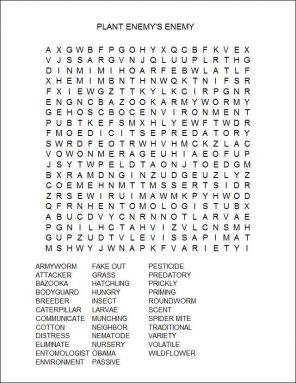A plant enemy’s enemy
Plants use chemicals to recruit help in fighting off pests
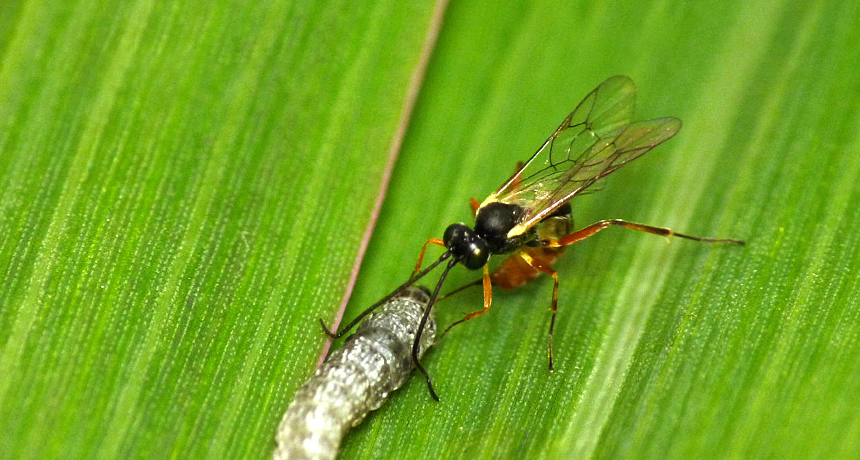
When eaten by caterpillars, some plants can emit chemicals that signal the help of special wasps. Once called, a wasp lays its egg inside a caterpillar.
TED TURLINGS
Plants have to stand their ground when pests attack. There’s simply no running away. Some plants play defense, using prickly thorns, thick bark or even bitter tastes to ward off insects and other attackers. But for many plants, the best defense is a good offense. These plants — including some varieties of corn and cotton — call for help. And predatory critters frequently respond, arriving to prey on the plants’ attackers.
Of course, plants don’t literally scream out to those helpers. Instead, they produce chemicals known as volatiles. Such chemicals easily evaporate and travel on the winds. The odor of these vapors silently attracts insects or other helpers — organisms that scientists call “bodyguards.”
Bodyguard critters eat the pests that eat plants. So if plants have enemies, then bodyguards are enemies of the plants’ enemies.
Plants evolved the ability to produce these chemical distress calls long ago. Scientists only discovered this secret signaling, however, in 1988. Since then, researchers have been probing how plants use these chemicals to communicate with animals. Their surprising findings have begun helping farmers boost the amount of crops they produce — and they do it with less need for toxic pesticides.
Mighty shout
By “trying to imagine what it would be like to be a plant,” 25 years ago, Marcel Dicke helped discover how plants communicate using volatiles. As an entomologist (EN toh MOL eh GIZT), Dicke studies insects at Wageningen University in the Netherlands. Back in the 1980s, he and biologist Maurice W. Sabelis at the University of Amsterdam were studying bean plants and the spider mites that preyed on them.
Mites are not insects, but distant relatives of spiders. Each mite is only about the size of a grain of pepper. But when legions arrive, these mites can kill a bean plant. Luckily for the plant, a so-called predatory mite loves to dine on spider mites.
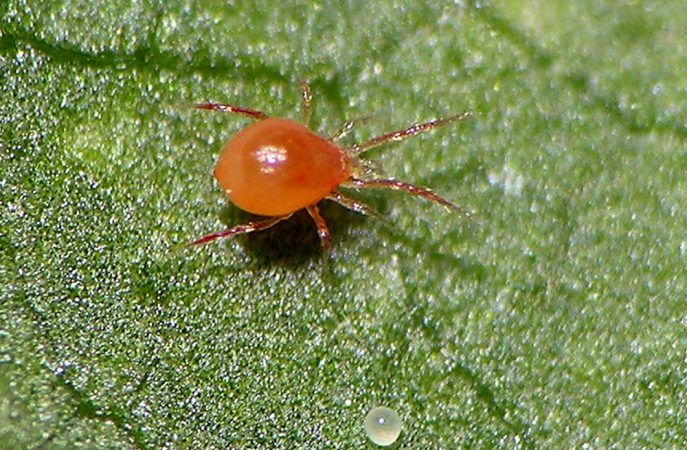
After many experiments, Dicke and Sabelis showed that bean plants release volatiles when spider mites attack. Although humans can’t smell these vapors, predatory mites can. Like a dinner bell, those scents call bodyguard mites over to eat— which can save the bean plant.
Since that first discovery, scientists have found that nearly all plants can issue similar volatile cries for help.
So with bodyguards available, why do farmers ever need to use chemical pesticides for their plants? “Some plants cry for help louder than others,” explains Dicke. Indeed, he notes, “Some plants only whisper.”
In 2012, entomologist Thomas Degen at the University of Neufchatel in Switzerland showed this in tests with six varieties of corn. His team used a device they nicknamed a “bazooka” to fling large numbers of a reviled corn pest, the fall armyworm caterpillar, among the plants. The scientists also released two types of wasps that eat armyworms. Then the biologists measured the volatile chemicals that each variety of corn produced as the pests started munching on the plant leaves. They also weighed the pests on each plant.
One “loud” corn type emitted 15 times as much of the distress scent as did the “quietest” variety. Corn plants that cried out loudest, chemically, had the fewest armyworms (as measured by weight). So producing more of the distress volatiles helped corn plants avoid being eaten.

Commence early offense
Unfortunately, by the time a plant attracts bodyguards, it may be too late. The pests may already have grievously injured the plant. That’s what happens to corn plants ravaged by the stem borer. Adult moths of this species lay their eggs on growing plants. As each caterpillar later emerges from the egg, it soon begins tunneling into the plant’s stem. The plants respond by pumping out chemicals that attract a small wasp.
Lured by the compounds’ scent, those bodyguard wasps lay their own eggs — this time, on the caterpillars. Before long, those eggs hatch and the wasp larvae begin eating the stem borers. While this may kill the pests before they can reproduce, the corn plant already may be dying.
That can be bad news in places such as Kenya, in East Africa. There, millions of farmers grow corn on plots smaller than a football field. These growers can lose 88 percent of their corn crop to damage from stem borers. When that happens, families go hungry.
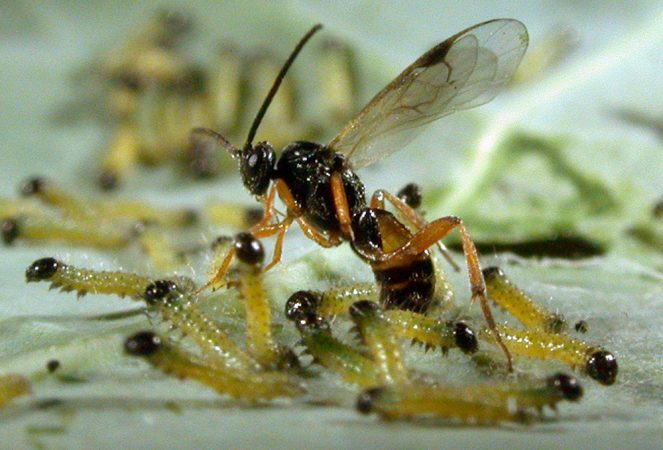
But what if corn plants could signal for help much earlier — before stem borers destroyed a plant? Two years ago, a team of scientists led by Amanuel Tamiru and Zeyaur Khan reported findings that some corn can do just that.
At the International Centre of Insect Physiology and Ecology (ICIPE), in Mbita Point, Kenya, they were studying some types of corn traditionally grown in Latin America. These plants sent out distress calls as soon as the pest begins laying its eggs.
Last year, they reported finding that some corn grown in Africa does the same thing. These corn crops send out their distress calls before the stem-borer caterpillars hatch and begin feeding.
In both Latin America and Africa, a pair of bodyguard wasps respond to a corn plant’s chemical distress calls. One wasp lays eggs on the plants that hatch quickly. When they larvae emerge, they feast on stem borer eggs. The other wasp does the same thing, but its larvae target stem borer caterpillars. Together, the two wasp species successfully eliminate stem borers before the pests can destroy the corn plant.
When a neighbor calls
Will calls for help by one crop plant under attack benefit nearby plants of the same species? That’s what Ali Zakir of the Swedish University of Agricultural Sciences in Alnarp, Sweden, wanted to know. An ecologist, he studies the relationship between living things and the environment.
The Egyptian cotton leafworm moth lays its eggs on cotton plants. After its larvae hatch, the caterpillars eat the plants’ leaves. The plant responds, emitting a scent that attracts bodyguard insects to eat the leafworms.
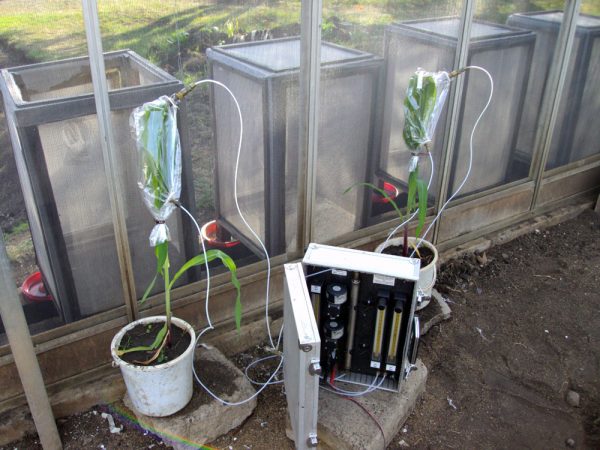
But leafworm moths also respond to these odors — and stay away, Zakir’s team reported last year. The odors mean that other leafworm larvae have already begun eating the cotton plant. This is something that newly arriving pest moths seem to understand.
They may worry that the existing pests will eat up most of the leaves before the new moths’ eggs will get a chance to hatch. That could starve her brood. Or maybe the incoming pest worries that too many bodyguard insects are on their way. That would also threaten the survival of her young.
Whatever the reason for the incoming pests decision, Zakir’s group found, adult leafworm moths who detect the distress chemicals on nearby plants scram — and lay their eggs elsewhere.
Pest moths also laid fewer eggs on any cotton near plants producing odors that signal they are being attacked. So yes, Zakir showed, healthy plants benefit from the distress cries of their neighbors.
Dicke has also shown that when one plant produces volatile help cries, neighboring plants of its species get ready to do the same. Scientists call this “priming.” One plant’s exposure to the signaling chemicals prepares, or primes, its untouched neighbors to prepare for an imminent attack.
Trait update
Now that scientists have begun to crack the code of plant and insect communications, some researchers are looking to translate this into information that farmers can use. Dicke, for example, works with plant breeders to develop cucumbers that more effectively attract bodyguards. These new plants produce a stronger odor — a louder cry for help.
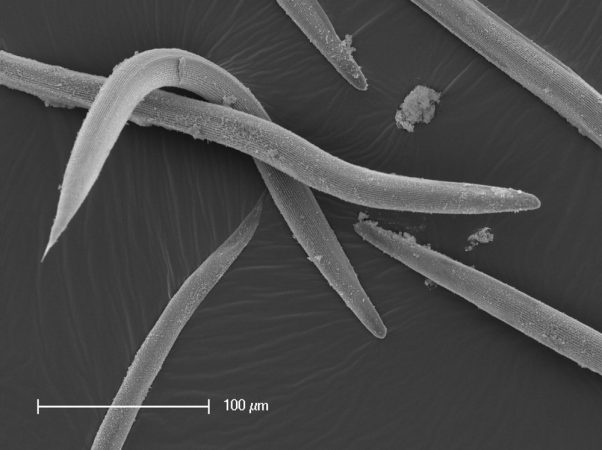
Not long ago, plant breeders knew nothing about how plants recruit animals to ward off attackers. So breeders instead paid attention to other traits they could alter. For example, breeders developed corn varieties that grew especially fast and produced larger ears (with more kernels). One unrecognized side effect: These changes sometimes also muted corn’s ability to call out to bodyguard insects.
This muting afflicts most U.S. corn, according to Ted Turlings. He’s an entomologist at the University of Neufchatel. While there are hundreds of varieties of corn in the world, American farmers grow only a handful, and they tend to be quite similar. Although all of these U.S. corn types grow fast, producing big and heavy ears, few can still make the volatiles to signal when they are being attacked by rootworms.
Corn rootworms are not true worms. They are the larvae of flying beetles. As these wormlike young develop, they live in soil. There they dine on roots of corn plants. Each year, the pests cost U.S. farmers $1 billion in crop destruction and insecticide treatments, according to the U.S. Department of Agriculture.
The roots of some corn plants produce a chemical when attacked by these pests. This attracts tiny predatory roundworms in the soil, called nematodes. Interestingly, the nematodes are attracted to the chemical even though the animals lack a nose (not to mention eyes and ears). These soil-dwelling bodyguards are each about 2.5 millimeters (0.1 inch) long, or less than half as long as a human eyelash.
Breeders developing new U.S. corn varieties accidentally bred out the ability to make distress volatiles. Scientists didn’t become aware of the problem until 2005, when Turlings was exploring ways farmers might protect corn from this pest.
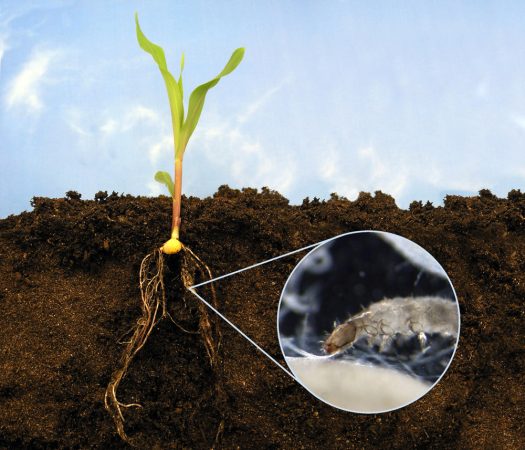
Complicating the problem, Turlings says, is that corn rootworms actually find the corn-distress chemicals yummy and nutritious. So when attacked plants begin spewing the chemical, it just encourages more rootworms to gang up on the troubled plant. This means that breeding plants to cry more loudly for help could just backfire.
Shoo and glue
In Kenya, Khan has found a clever way to deal with corn pests. He plants a particular wildflower between rows of corn and a type of a “killer” grass outside of the corn fields. The flower makes chemicals that repel corn pests. And the grass lures pests away from the corn — where most will die.
Khan works with John Pickett from Rothamsted Research, a crop-science organization in England. Together, they identified the chemicals that corn produces when attacked by stem borers. The two experts then identified a wildflower in the pea family, Desmodium, which produces those same chemicals. Moreover, this flower makes those chemicals all the time, even when it’s not being attacked by pests.
Since 1998, Khan has taught farmers in Kenya to plant Desmodium between corn rows. This increases the corn available to be harvested each year.

Here is how it works: The wildflower’s fake-out of a corn plant’s distress call tends to send stem-borer moths fleeing. That is just the first of a two-part strategy Khan calls “Push-Pull.” For the second part, farmers plant Napier grass away from their fields. Often fed to cattle, this grass attracts egg-laying stem borer moths. So while the flower provides the push to repel pests before they lay their eggs, the Napier grass supplies the pull to attract them — and their eggs — away from planted corn.
Those eggs could still produce plenty more of the pests — except that Napier grass is a particularly unhealthy nursery for the caterpillars. The reason: It is so super sticky that most stem-borer larvae quickly get stuck. Only one in five hatchlings on Napier grass survives to become an adult.
The Push-Pull system can more than triple the amount of corn available to harvest. That is why today more than 55,000 farmers in East Africa use this system. Among them is President Barack Obama’s step-grandmother, the woman he calls Granny Sarah!
It is easy to think of plants as passive creatures because they cannot move. But the more scientists investigate, the more they are learning how plants take a very active role in influencing the world around them.
Watch a short video of wasps swarming a broccoli leaf being eaten by caterpillars. The wasps, lured by volatiles produced by the plant, arrive to lay their eggs inside the caterpillars.
Power Words
entomologist Scientist who studies insects.
ecologist Scientist who studies the relationships among living things.
mite Tiny creature related to spiders and ticks. It is not an insect.
larva Immature form of an insect. The plural form is larvae.
nematode Type of roundworm, usually found in soil. It is very small, with no eyes, ears or nose.
parasite An organism that lives together with another living thing, called a host, and causes harm to the host.
pesticide Chemical used to kill pests.
predatory Animal that kills and eats other living creatures.
prime Make ready or prepare for use or action.
volatile Chemical that easily evaporates.
Word Find (click here to print puzzle)
